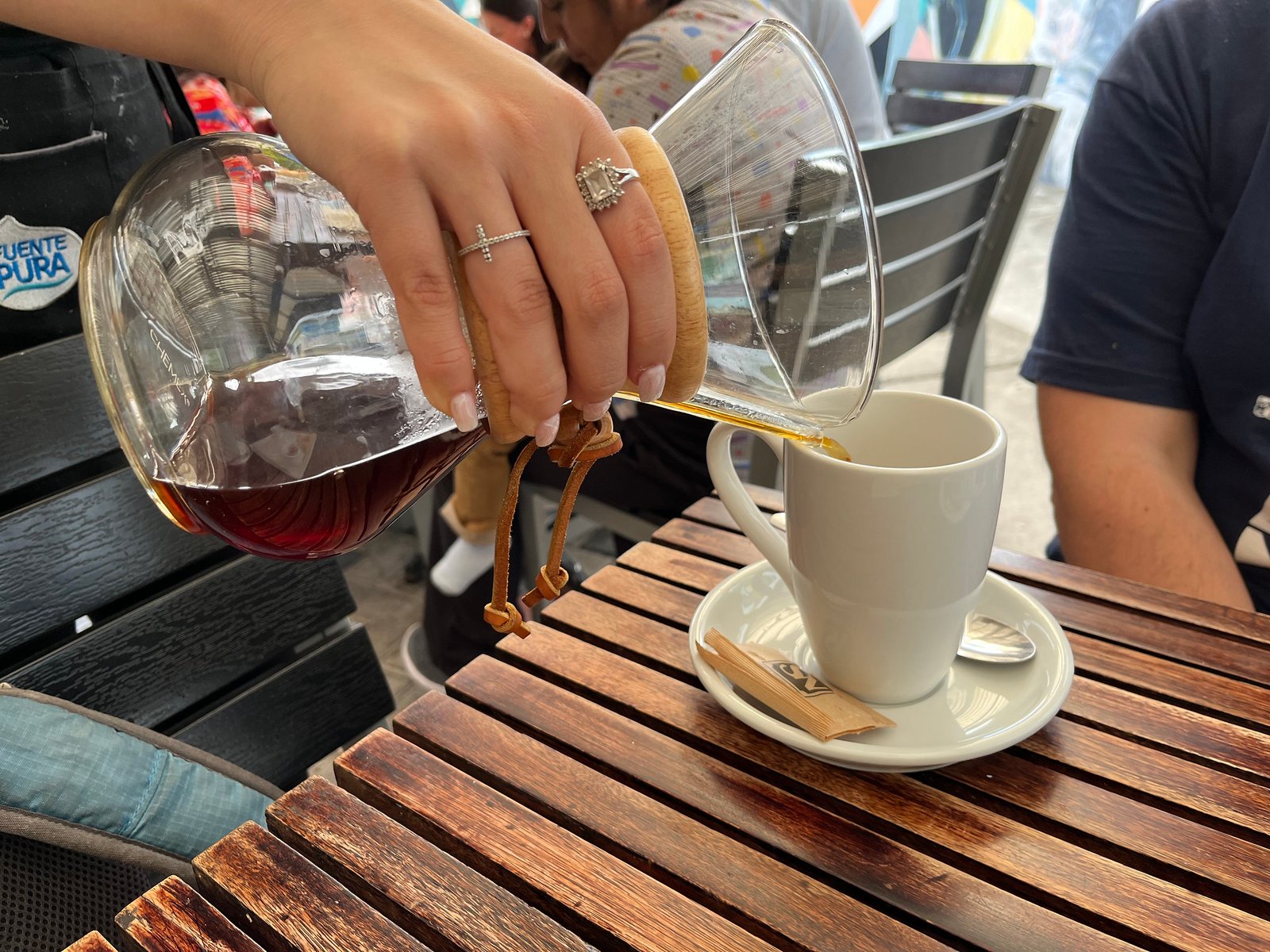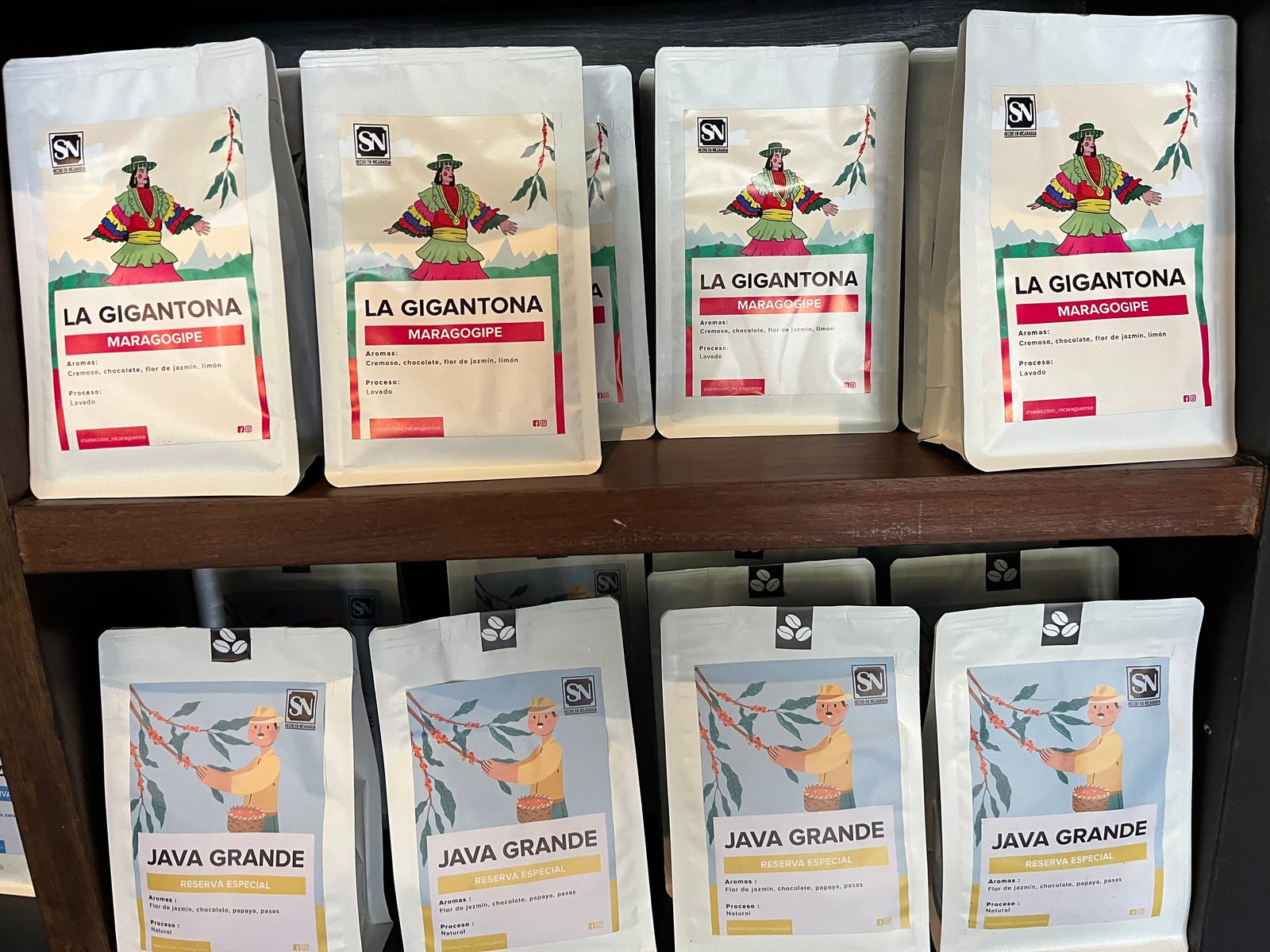At breakfast, we planned to ask Edgar, if he could give us a tour of his El Soccorro finca or recommend any other coffee tours in the area. But it turned out, we didn't even have to ask. Edgar was super enthusiastic and excited about these two travelers who wanted to know a little bit about his farm life. He was ready to tell us everything we wanted to know about the coffee business and the bean-to-cup process. While Julia and I were stuffing our faces with delicious nacatamales, Edgar spoke for nearly an hour about el café. This was a part lecture, part presentation, and part Q&A session about everything coffee-related.
“Here in Nicaragua, we have one of the best places for growing coffee.” Edgar began in a near-preaching, patriotic tone. “A lot of these coffee trees you see around here are grown under a canopy of other trees, and that’s how you get shade-grown coffee, and shade-grown coffee is great. It sells well. Everyone wants it. Nicaragua is one of the leading producers of shade-grown coffee”.
Later, I checked online and confirmed that Nicaragua is indeed one of the top world producers of shade-grown coffee. Despite frequent revolutions, wars, and civil unrest, the country has largely avoided deforestation and protected natural habitats that are so advantageous to growing high-quality beans.
“Besides, most coffee trees that you see around here are arabica, and not robusta,” continued Edgar with his voice proudly booming around the room.


From our prior travels, I knew the main difference between arabica and robusta. Arabica trees produce beans that are larger in size, have better taste, and therefore are more expensive, while robusta trees are known for the volume of beans each tree can yield rather than the quality. Robusta is cheaper and used mostly for making instant coffee. Brazil and Vietnam are the #1 and #2 coffee-producing nations by volume, mainly for giving the world a lot of robusta.
"Arabica is more valuable but is prone to disease,” noted Edgar. “Robusta, on the other hand, is much more disease-resistant, but it doesn't have a great taste.”
“It all comes down to taking and managing risks,” added Edgar, and I saw how his eyes sparkled, and he started to talk as a businessman. “You can invest in arabica and sell it at a higher price, but you can also lose some of your harvest to diseases. Or you can grow robusta, taking little or no risk, but you won't sell it for a good price. Your choice.”
Edgar then launched into explaining that some coffee farmers cross-pollinate arabica and robusta to take the best of both worlds: a great taste of arabica combined with more disease-resistant robusta.
“This is all a matter of the selective breeding process. Like tulips in the Netherlands, which are cross-pollinated to create new flowers, the same techniques apply to create new types of coffee. Usually, it's done in small batches to see what survives in the wild. You can cross-pollinate as much as you want, but the plant needs to be viable and survive in nature,” Edgar summarized.
When I mentioned yellow coffee fruits that we noticed growing in Nicaragua, Edgar immediately reacted: “Yep, that’s what I'm talking about. Yellow catuai, a mutation of arabica and robusta.”

At this point, we finished our breakfast but didn't want to let Edgar go and wanted to pepper him with more questions. Three years prior, in El Salvador, we learned about different ways of processing coffee and wanted to know what our host thought about different methods.
Once he heard the question, Edgar kicked into a higher gear and started to unload a lot of information on us:
“There are three main types of coffee processing: washed, honey, and natural. The washed method is the classic method that has been around for hundreds of years. That’s what I use here, at my finca. You collect ripe coffee cherries and then you wash them with water through special funnels. Good coffee beans settle at the bottom, and bad beans float to the surface, and we remove them. You repeat this process several times. Then, you put coffee cherries through the first machine that removes the outer coating of the fruit. The beans are then left to ferment with the internal coating on, as it has natural sugar. After the fermentation is completed several days later, the beans are processed through the second machine that removes the dry inner coating called pergamino. Then, the beans are dried under the sun, sorted, packaged, and shipped. It's called the washed method because when you dry a coffee bean, all the fruit pulp has already been fully removed from the coffee cherry.”
When I asked Edgar if he had all the equipment to follow the washed method, he said that he had only the first machine at his farm, and to use the second machine to remove pergamino, he usually takes his beans to nearby production facilities (beneficio) on the outskirts of Matagalpa.
“That second machine is way too expensive,” Edgar quipped.
“And you don’t roast coffee before you ship, correct?”
“That’s right. Coffee beans are roasted in the country of destination to prolong the shelf life of the beans.” “For my personal consumption,” Edgar pointed to the coffee pot on the table, “I take them to one of the roasteries in town.”
“And how are the honey and natural methods different?”
I immediately sensed that Edgar was skeptical about these new alternative methods.
“Look, if you have good trees and good beans, you don’t need to engage in this form of witchcraft and can just follow the washed method. That’s what I do. Call me old-school.”
Edgar then lowered his voice and started to sound almost conspiratorial.
“It’s like a game. The scale is 0 to 100. Everything that is graded above 90 is gourmet coffee. Coffee at this finca usually scores in the high 80s, which is good. Not gourmet, but it's still a good-quality coffee. But what about those people whose coffee beans score in the average 60s or 70s range? How can they up the score?”
“Through the honey and natural methods?” I already knew the answer.
“Exactly!”


Edgar then went on to explain that the honey method generally follows the washed method but utilizes only the first machine to remove the outer coating, and the beans are then dried with pergamino on. The natural method is even more radical as it doesn't involve any removal of the coating at all, and coffee fruits are dried with the coating on. Like arabica v. robusta, it's all about risk-taking. Although the honey and natural methods create new experimental taste profiles and boost the overall score of the beans, such techniques carry a lot of risk. Because pulp contains sugar, drying coffee beans with pulp is a precarious process: any contact with water can cause mold and ruin the entire batch. It's a high-risk, high-reward game.
I could listen to Edgar for hours and was ready to follow him around for the entire day just to see how the sausage is made. But we needed to let him go to do a more important task of running a coffee farm.
For all three days that we were in the coffee region, we couldn't get enough of Nicaraguan coffee. We drank it several times a day and indulged ourselves in trying beans processed through both traditional and experimental methods. And we loved them all!
Next week: read more about our coffee adventures in Nicaragua and how we got in trouble by trying to smuggle too much coffee back to the U.S.

